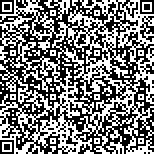下载中心
优秀审稿专家
优秀论文
相关链接
摘要

李小文长期致力于遥感基础研究,是植被几何光学遥感建模的先驱。他创建了Li-Strahler几何光学模型,论文入选“国际光学工程学会(SPIE)”里程碑系列文集。以李小文为首席科学家,带领国内外科学团队,在植被二向性反射建模、热红外遥感辐射方向性建模、遥感信息尺度效应、定量遥感综合实验与真实性检验方面做出了卓越成就。本文总结了李小文的主要学术思想,对定量遥感相关研究进展进行了总结和回顾,对遥感科学及相关领域具有重要的借鉴和参考意义。
Academician Li Xiaowen devoted his time in fundamental research in remote sensing. He was the pioneer in the field of geometric–optical modeling of vegetation canopy and had a great reputation in international remote sensing community. The Li–Strahler geometric–optic model was selected as the SPIE milestone series. Li Xiaowen, who was the chief scientist, led the scientific team to obtain outstanding achievements in bidirectional reflectance distribution modeling, directional thermal emission modeling, spatial- and temporal-scale effects of remote sensing information, quantitative remote sensing inversion, and comprehensive experiments. In this paper, Li Xiaowen’s biography was briefly introduced, and his academic contributions in quantitative remote sensing theory and methodology were summarized.

